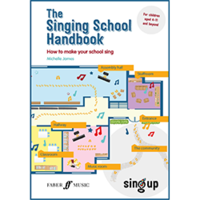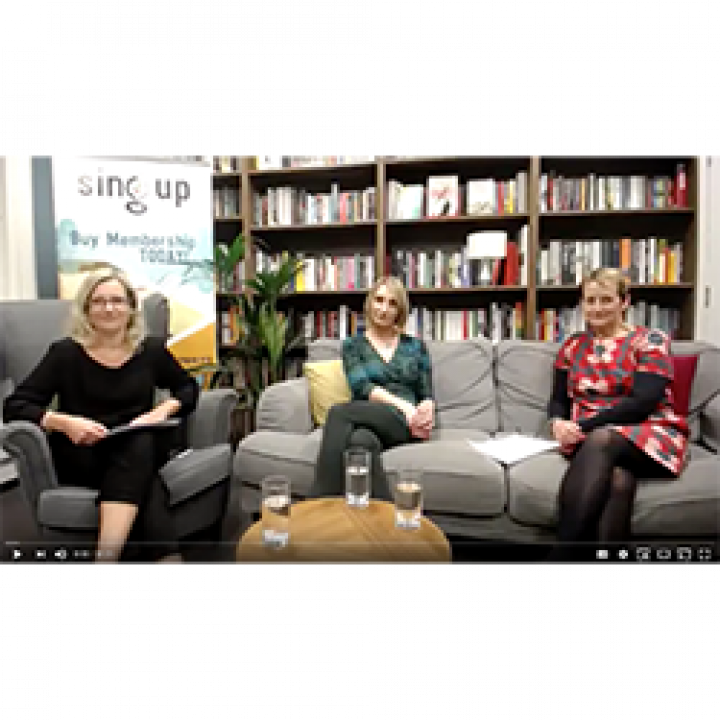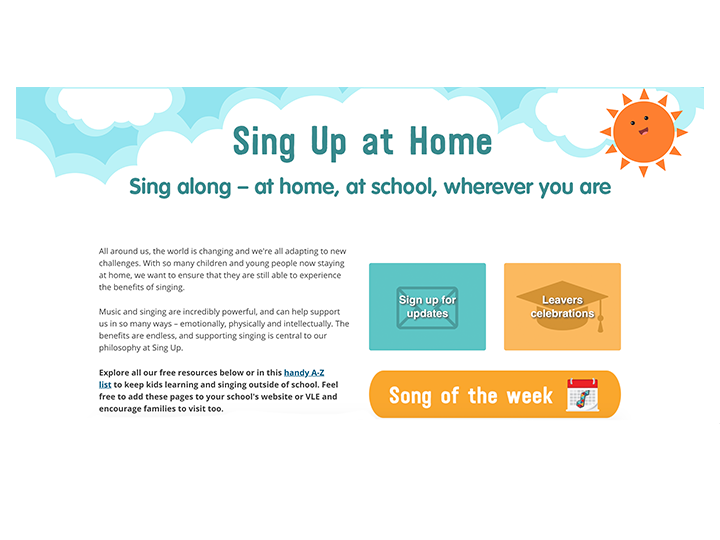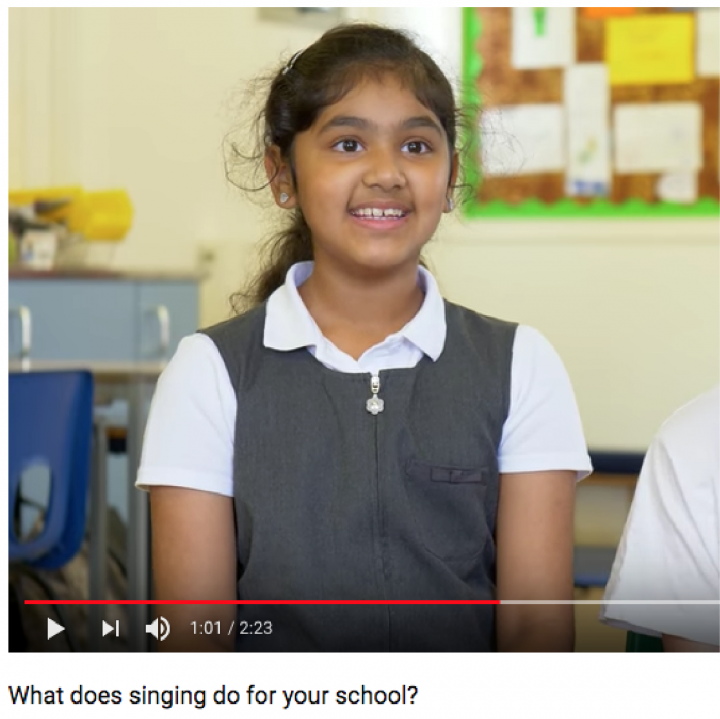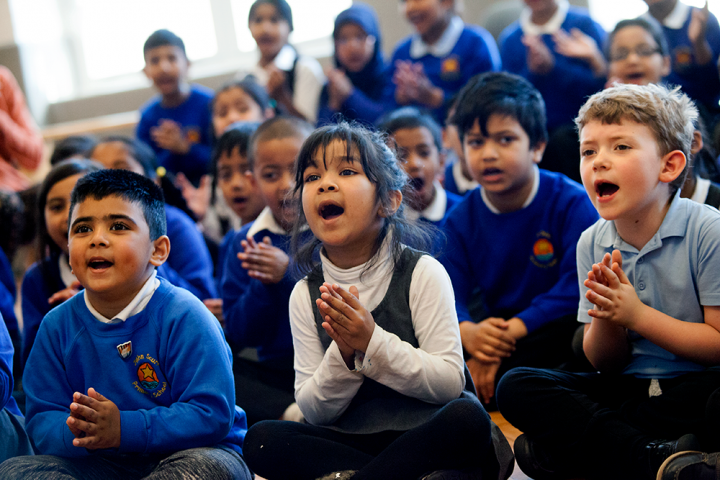
Singing is for everyone and an important part of our role as teachers and singing leaders is to take steps to remove barriers to music making and singing for all children, including those with special educational needs.
Music and singing in particular has the power to break down barriers, but it can also present barriers for some children. With singing this needs particularly close attention, as the use of words, and of the voice at all, can be difficult for some children. Reading and notation can also present challenges, as can the social setting of group singing and the perceived vulnerability of our own individual singing voices. However, there are ways around all of these potential obstacles, and singing can be a hugely inspiring, motivating and positive experience for all.
SEND is a catch-all term covering a very wide range of needs. The SEND code of practice defines four main areas of need:
- Communication and interaction
- Social and emotional
- Cognition and learning
- Sensory
In reality, these areas are likely to overlap, and children may be affected to different degrees across different areas of learning. Every child is so unique in their ways to engage and respond that no categorisation can completely and adequately inform your approach. You will find the best ways to connect with individuals simply through getting to know them. Further to this, as a music leader in particular, it is not always necessary – or possible in the case of some peripatetic teachers visiting for the first time – to be completely aware of each child’s label, only how to offer a safe musical space that they can participate in. It may be more useful for a music leader to look at the potential challenges that can be common across many of these categories.
It is also worth considering how music is built into the day and how this fits into the school setting. The teacher is best placed to consider what will work for the setting and for the needs of the children they are working with.
Singing for children with cognitive, learning, communication and interaction difficulties
It can be helpful to the music teacher to approach these in a connected way, as these types of learning difficulty tend to overlap and are not necessarily clearly defined in a child’s experience.
Challenges for children with these types of difficulties include barriers around the use of language – both spoken and written language – the reading and processing of symbols, mental processing speed, memory, focus, organisation and sequencing, social challenges, sensory sensitivity and problems with motor control. Singing can be a successful and rich approach to working with children with these difficulties. The most important part of the teachers’ approach is to view singing as a wide and flexible activity. Singing can provide an inclusive space for children to engage in their own ways on many more levels than simply learning and reproducing a song. Some students may take longer than others to become involved in music and singing, and if a young person is not immediately joining in it doesn’t necessarily indicate that they are not engaged or not absorbing what is happening.
Singing for transitions
Singing can be extremely helpful for transitions, which can be challenging moments during the school day for many children with learning difficulties, particularly those on the autism spectrum. In a music session with these children you might want to begin with a welcome song, or a song introducing the fact that it is now ‘music time’, and end with a ‘goodbye’ or a ‘music is over’ song.
Top tips for cognitive, learning, communication and interaction difficulties
- Link as many concepts and learning styles together as possible within one activity e.g. visual, auditory, kinaesthetic, linguistic.
- Use technology like microphones, loop pedals and BIGmac switches – especially useful for nonverbal children.
- Use flashcards to support visual cues and learning.
- Use simple language and avoid metaphors – especially for those children on the autism spectrum.
- Repetition, repetition, repetition!
- Create ritual and structure at every level and keep this consistent e.g. the structure of the session, the sequence of a music activity, the process of learning a song.
- Work in small musical phrases to teach any new songs or musical material.
Singing for children with social, emotional and mental health issues
These children may be facing extremely challenging circumstances in their lives, and singing can be a chance for them to take some time out from their daily reality. It can be a good release and chance to channel some anger or emotion in a different way. It may give them an opportunity to express themselves when this could be difficult for them to do in other contexts.
Music can offer the chance to develop confidence and self-belief, as young people may be able to engage with music even if they struggle in other areas of education and general life. They can also explore their own self-expression, identity and creativity, and feel a sense of control that they may not experience in other areas of their lives. Group music-making and singing can help to build social, interaction and communication skills, and young people that have previously struggled to work with other people often begin to communicate and find ways to work together.
Activities
Group warm-ups can be a great way in, and often doing these without any verbal instruction from the music leader, relying simply on copying and gesture can be really effective in creating a calm and focussed atmosphere from the start. Rhythm games and pair work can be a good way to move these towards the next stages of music-making.
Turn-taking and call-and-response songs can give opportunities for individual children to have small solos, often with responses from the rest of the group. They can be simple and fun, and the class will learn to sing responses to the call of a leader. There can also be a movement element, which could be set, or the leader could create the movement for everyone else to copy. It is a great chance to nurture a safe environment where everyone’s contributions are celebrated.
Learning songs in different languages can also provide an accessible starting point, as they can remove barriers or associations that children may have with their use of English and language within an educational environment. It can give a chance to explore new sounds and ways to use the voice and can allow everyone to feel like they are all starting from the same point of learning, as it is likely that no one has prior knowledge of the vocabulary. Songs such as Oleo from Ghana can be particularly useful, as they often use sounds and syllables that are conducive to producing a strong singing sound, and they can be immediately effective.
Top tips for social, emotional and mental health issues
- Find out as much as possible about the children you are working with, including any specific behaviour triggers, and adapt the way you work.
- Consider the set-up of the room. Some young people may struggle to be in a group and may need to know that they can easily leave the room or go to a safer space if they are feeling anxious or overwhelmed.
- Keep sessions active with lots of movement, as some children may find it hard to sit still.
- Take as many opportunities as you can to incorporate young people’s ideas and to celebrate their contributions e.g. ideas for songs, how to sing or improve things.
The Singing School Handbook
To find out more about inclusive singing with SEND pupils, including further information on sensory difficulties or physical disabilities, check out The Singing School Handbook by Sing Up (published by Faber Music), available here.

